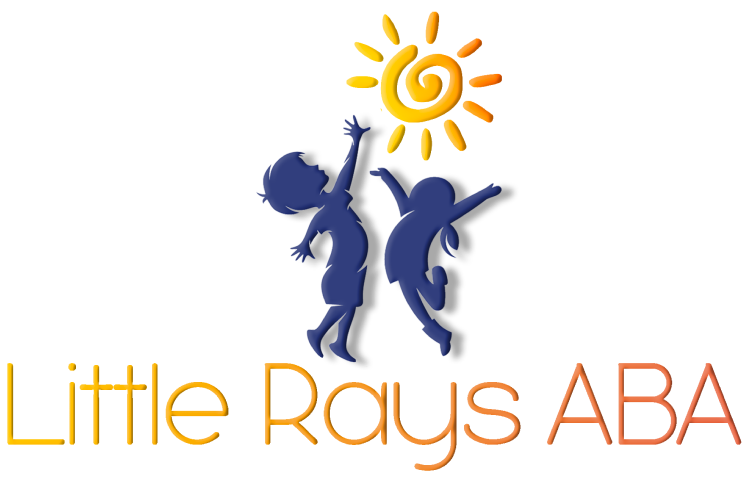Understanding Autism and ADHD
Autism Spectrum Disorder (ASD) and Attention-Deficit/Hyperactivity Disorder (ADHD) are two distinct neurodevelopmental conditions. While they can share certain symptoms, it’s important to understand how they differ and where they overlap.
Differentiating Symptoms
The key to distinguishing Autism and ADHD symptoms lies in understanding their core characteristics.
| Characteristic | Autism Spectrum Disorder (ASD) | Attention-Deficit/Hyperactivity Disorder (ADHD) |
|---|---|---|
| Communication | Noticeably impaired communication, difficulty putting words to thoughts and feelings | May talk nonstop, frequent interruptions in conversations |
| Social Interaction | Challenges in social interactions, difficulty understanding social cues | Difficulty maintaining attention in social settings, may seem inattentive or impulsive |
| Behavioral Patterns | Restricted or repetitive behaviors, strong preference for routines and order | Difficulty with routines, hyperactivity, impulsivity, may outgrow symptoms |
These distinct and specific characteristics help differentiate between ASD and ADHD, both of which have unique diagnostic criteria.
Overlapping Characteristics
While ASD and ADHD have distinct symptoms, they share several overlapping traits, making differential diagnosis challenging. Here are some common characteristics:
| Overlapping Traits | Description |
|---|---|
| Inattention | Difficulty focusing and maintaining attention is common in both disorders. |
| Impulsivity | Both conditions can exhibit impulsive behaviors, although it is more pronounced in ADHD. |
| Hyperactivity | Can be present in both, though it is a primary symptom of ADHD. |
| Social Challenges | Struggles with social interactions can be seen in individuals with either condition. |
| Sensory Sensitivities | Both can exhibit sensory processing issues, such as sensitivity to noise or textures. |
Recognizing these overlapping characteristics is crucial for understanding the nuanced differences between ASD and ADHD. Diagnosing both conditions accurately is significant because individuals can be diagnosed with both disorders simultaneously. For more detailed insights, explore our section on ADHD or autism spectrum.
Understanding both the differences and similarities between autism and ADHD can aid in their accurate identification and treatment. To learn about the prevalence and diagnostic challenges of co-occurring conditions, visit our page on ADHD and autism spectrum disorder.
Autism Spectrum Disorder (ASD) Symptoms
Core Symptoms of ASD
Autism Spectrum Disorder (ASD) is primarily characterized by two core symptoms: difficulties with social communication and interaction, and restricted and repetitive behaviors. These core symptoms manifest in various ways and can impact an individual's daily functioning.
Social Communication and Interaction:
- Challenges in understanding and responding to social cues
- Difficulties in forming and maintaining relationships
- Limited or absent eye contact
- Delayed language development or nonverbal communication
Restricted and Repetitive Behaviors:
- Repetitive movements such as hand-flapping or rocking
- Insistence on adherence to routines or sameness
- Highly focused interests or preoccupations
- Sensory sensitivities to lights, sounds, textures
Not all individuals with ASD exhibit these symptoms in the same way, indicating a spectrum of presentations.
Severity Levels of ASD Symptoms
The severity of ASD symptoms can vary widely among individuals. To categorize these variations, ASD symptoms are often classified into three levels based on the level of support required.
| Severity Level | Description | Example Behaviors |
|---|---|---|
| Level 1 | Requiring Support | Difficulty initiating social interactions, atypical responses to social overtures, can function with minimal support |
| Level 2 | Requiring Substantial Support | Marked deficits in communication skills, limited initiation of social interactions, difficulty coping with change |
| Level 3 | Requiring Very Substantial Support | Severe difficulties in social communication, minimal engagement in social interactions, extreme distress with small changes |
Individuals with Level 1 Autism may require some support in social and organizational tasks but can often live independently. Those with Level 2 may need more consistent support with daily routines and social interactions. Level 3 represents the most severe form of ASD, necessitating significant support in all areas of life.
It's important to note that the distinction between autism and ADHD is crucial, as overlapping symptoms can complicate diagnosis and treatment. To learn more about this topic, see our article on adhd and autism spectrum disorder.
By recognizing the core symptoms and their severity levels, individuals, families, and clinicians can better navigate the complexities of Autism Spectrum Disorder and ensure the necessary support and interventions are in place.
Attention-Deficit/Hyperactivity Disorder (ADHD) Symptoms
ADHD can significantly impact daily functioning and overall quality of life. Understanding the core symptoms and the different types of ADHD presentations is crucial for accurate diagnosis and management.
Core Symptoms of ADHD
The core symptoms of ADHD are categorized into two main types: inattention and hyperactivity-impulsivity. Some individuals may exhibit symptoms from both categories, but all symptoms must be present to a degree that is inappropriate for a person's developmental level and significantly interferes with their functioning.
Inattention Symptoms:
- Difficulty sustaining attention on tasks or play activities
- Often seems not to listen when spoken to directly
- Frequently loses items necessary for tasks and activities
- Easily distracted by extraneous stimuli
- Often forgetful in daily activities
Hyperactivity-Impulsivity Symptoms:
- Fidgeting with or tapping hands or feet, squirming in seat
- Difficulty remaining seated in situations where it's expected
- Running or climbing in inappropriate situations
- Unable to play or engage in activities quietly
- Talking excessively
- Interrupting or intruding on others (e.g., butting into conversations or games)
These symptoms manifest differently across individuals and age groups. Additionally, because some individuals show traits of both ADHD and autism without fitting neatly into one category, thorough evaluations are essential.
Types of ADHD Presentations
Based on the predominant symptoms, ADHD is categorized into three different presentations. These presentations may change over time as symptoms evolve.
| ADHD Presentation | Description |
|---|---|
| Predominantly Inattentive Presentation | The individual primarily shows symptoms of inattention such as difficulty sustaining attention, easily getting distracted, and forgetfulness. |
| Predominantly Hyperactive-Impulsive Presentation | The individual primarily shows symptoms of hyperactivity and impulsivity like excessive fidgeting, difficulty staying seated, and impulsive actions. |
| Combined Presentation | The individual exhibits an equal number of symptoms from both inattention and hyperactivity-impulsivity categories. |
| Statistic | Value |
|---|---|
| Prevalence of Predominantly Inattentive Presentation | Approximately 30-40% |
| Prevalence of Predominantly Hyperactive-Impulsive Presentation | Approximately 10-20% |
| Prevalence of Combined Presentation | Approximately 50-60% |
Adults with ADHD may also experience difficulties such as trouble focusing, missed deadlines, and impulsive behavior, including impatience and mood swings.
Diagnosis and Evaluation
Diagnosing autism and ADHD can be complex due to the variations in symptoms and the potential overlap between the two conditions.
Diagnostic Challenges
Diagnosing either autism or ADHD involves multiple steps, as there are no single medical tests for these conditions. The process usually includes observations, interviews, and developmental assessments. This is challenging because symptoms of both disorders can resemble those of other conditions such as sleep disorders, anxiety, depression, and specific learning disabilities.
| Diagnosis Steps | Autism | ADHD |
|---|---|---|
| Observations | ✔ | ✔ |
| Interviews | ✔ | ✔ |
| Developmental Assessments | ✔ | ✔ |
| Medical Tests | ✖ | ✖ |
Until 2013, the Diagnostic and Statistical Manual of Mental Disorders (DSM) did not allow for a simultaneous diagnosis of autism and ADHD. However, dual diagnoses are now acknowledged.
Co-occurring Conditions
It's not uncommon for individuals to experience both conditions, often referred to as "autiHD". Co-occurring conditions can further complicate the diagnosis and require a thorough evaluation by healthcare professionals.
| Condition | Prevalence with Autism | Prevalence with ADHD |
|---|---|---|
| Sleep Disorders | High | High |
| Anxiety | High | High |
| Depression | Moderate | High |
| Learning Disabilities | High | Moderate |
Understanding the intricacies of these diagnoses is vital to provide individuals with appropriate treatment and support.
Co-occurring Autism and ADHD
When examining autism and ADHD, it's essential to understand how frequently these two neurodevelopmental disorders co-occur and the challenges associated with their diagnosis.
Prevalence Rates
Co-occurrence between Autism Spectrum Disorder (ASD) and Attention-Deficit/Hyperactivity Disorder (ADHD) is notably high. More than half of all individuals diagnosed with ASD also display signs of ADHD. Conversely, only up to a quarter of children diagnosed with ADHD show low-level signs of ASD, indicating an asymmetrical relationship between these disorders.
Various studies have provided insights into the prevalence rates:
| Disorder | Prevalence of Co-occurring Symptoms |
|---|---|
| ASD with ADHD | 50% or more |
| ADHD with ASD | 25% |
Further, a 2019 study published by ScienceDirect indicated that ADHD is present in 30-80% of individuals with ASD and that ASD presents in 20-50% of individuals with ADHD, highlighting the frequent co-occurrence of these conditions.
Challenges in Diagnosis
Diagnosing autism vs ADHD symptoms can be complex due to overlapping characteristics between the two disorders. Symptoms such as difficulties with attention, hyperactivity, and social interaction can manifest in both conditions. This overlap increases the risk of misdiagnosis.
Some of the key challenges in diagnosing co-occurring autism and ADHD include:
- Overlapping Symptoms: Symptoms common to both disorders, such as inattention and impulsivity, can make it difficult to differentiate between the two.
- Misdiagnosis: According to some studies, the misdiagnosis rate of ADHD as autism ranges from 10-20%. This indicates the necessity of thorough and accurate evaluations.
- Variability in Presentations: It is possible for an individual to display certain traits of each disorder without fully meeting the diagnostic criteria for both. This requires comprehensive assessments to ensure accurate diagnosis and treatment.
Given these challenges, it's vital for healthcare professionals to conduct exhaustive evaluations to discern the presence of both conditions accurately. Understanding these distinctions can aid in proper diagnosis and effective intervention strategies.
Managing Autism and ADHD
Addressing both Autism Spectrum Disorder (ASD) and Attention-Deficit/Hyperactivity Disorder (ADHD) necessitates an integrative approach. Effective management often involves combining medication, behavioral therapies, and tailored interventions specific to the needs of the individual.
Treatment Approaches
A multifaceted treatment plan often yields the best results for managing ASD and ADHD. This includes medication, which can alleviate core symptoms, as well as behavioral therapy and other supportive measures.
| Treatment | Autism (ASD) | ADHD |
|---|---|---|
| Medication | Atypical antipsychotics, SSRIs | Stimulants, non-stimulants |
| Behavioral Therapy | Applied Behavior Analysis (ABA), Social Skills Training | Cognitive Behavioral Therapy (CBT) |
| Supportive Measures | Occupational Therapy, Speech Therapy | Parent Training, Educational Support |
Medications such as atypical antipsychotics and SSRIs may be utilized for ASD to help manage mood swings, anxiety, and irritability. For ADHD, stimulant medications (e.g., methylphenidate) are commonly prescribed to improve attention, reduce hyperactivity, and decrease impulsivity. Non-stimulant medications like atomoxetine can also be effective for some individuals.
Therapeutic Interventions for Both Disorders
Behavioral therapies play a significant role in managing both ASD and ADHD. These include:
- Applied Behavior Analysis (ABA): ABA focuses on improving social, communication, and learning skills through positive reinforcement.
- Cognitive Behavioral Therapy (CBT): CBT helps manage ADHD by teaching coping mechanisms and providing strategies to improve focus and organization.
- Occupational Therapy (OT): OT is particularly beneficial for individuals with ASD, helping them develop daily living skills and sensory integration.
- Social Skills Training: This type of training is crucial for both ASD and ADHD to help improve interactions and relationships.
The Drake Institute has documented cases where individuals with ADHD have shown significant improvement after undergoing various forms of therapy, sometimes to the extent that they no longer meet the diagnostic criteria for the disorder.
Conclusion
Understanding the differences and similarities between Autism Spectrum Disorder (ASD) and Attention-Deficit/Hyperactivity Disorder (ADHD) is essential for accurate diagnosis and effective support. Whether you’re a parent, educator, or caregiver, recognizing these distinctions can help create tailored interventions that empower individuals to thrive.
If you have concerns about ASD, ADHD, or co-occurring conditions, our team at Little Rays ABA is here to help. Contact us today to learn more about our specialized ABA therapy services and how we can support your child’s unique needs!
Sources:
- https://www.webmd.com/add-adhd/childhood-adhd/adhd-or-autism
- https://www.drakeinstitute.com/can-you-have-autism-and-adhd
- https://www.autismparentingmagazine.com/learn-autism-differences/
- https://www.autismspeaks.org/autism-symptoms
- https://www.nimh.nih.gov/health/topics/autism-spectrum-disorders-asd
- https://www.sciencedirect.com/science/article/pii/S1750946723000466
Unlock Your Child's Potential with Expert ABA Therapy!
At Little Rays ABA, we provide compassionate, evidence-based ABA therapy to help children with autism thrive. Our personalized approach fosters growth in communication, social skills, and independence.
Get In Touch With Us Today to Get Started With ABA Therapy!
Related Posts
MENU
GET IN TOUCH
7117 San Salvador Dr Boca Raton, FL 33433
3200 Collins Ave Miami Beach, FL 33140





